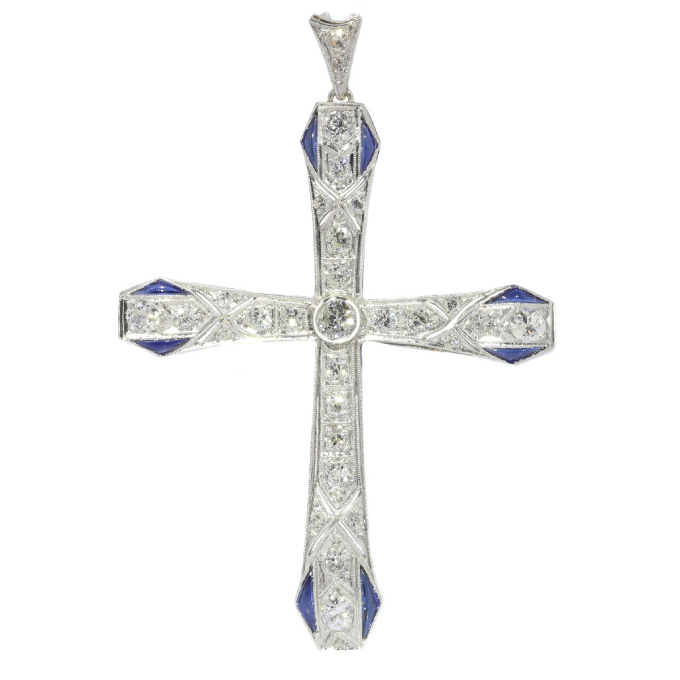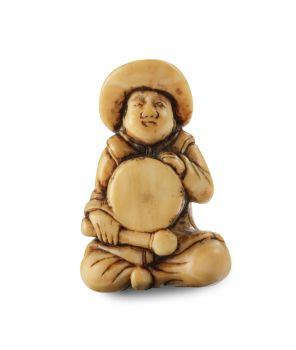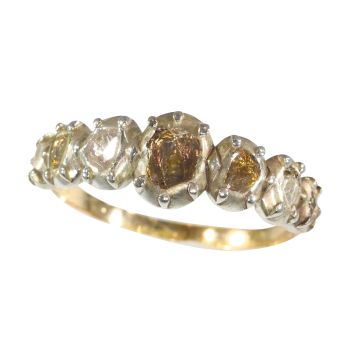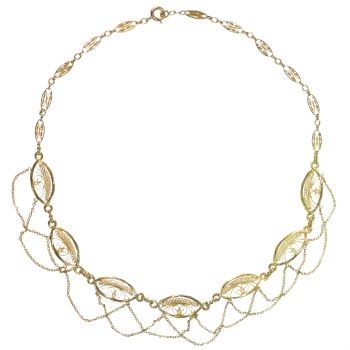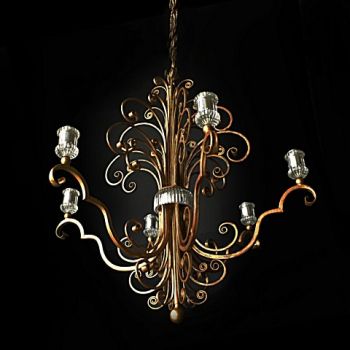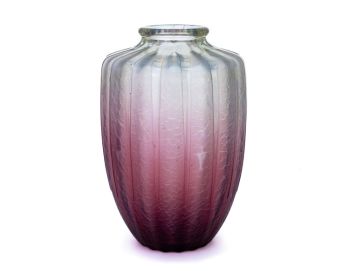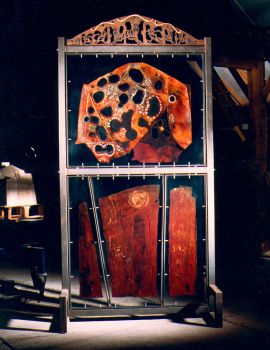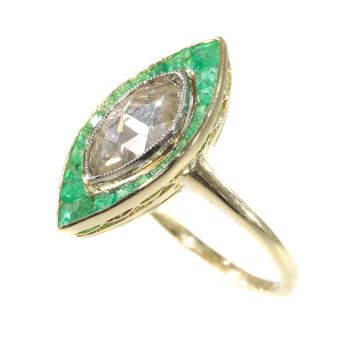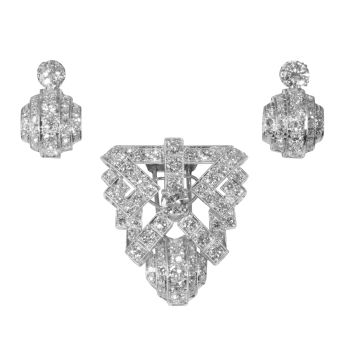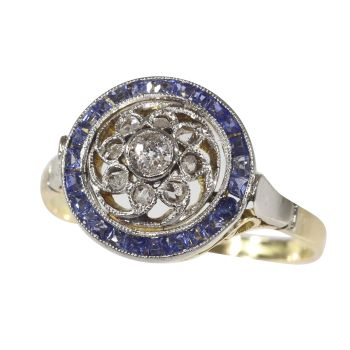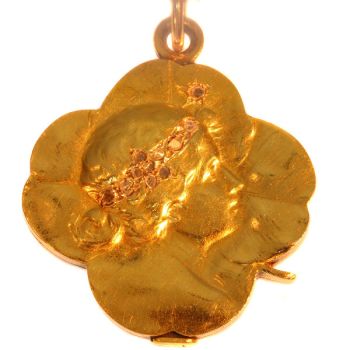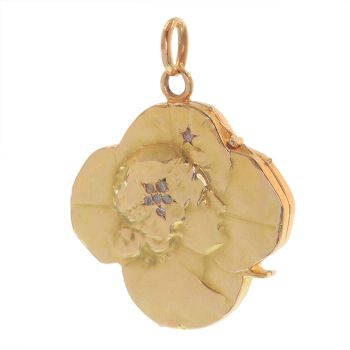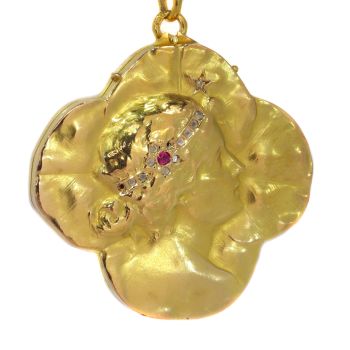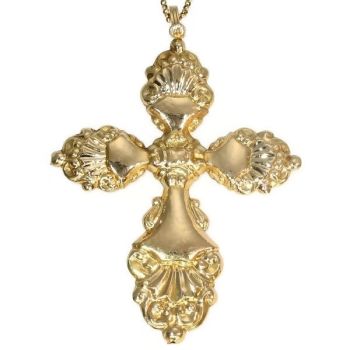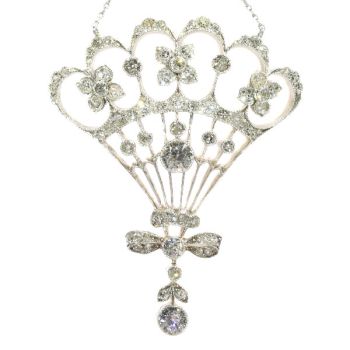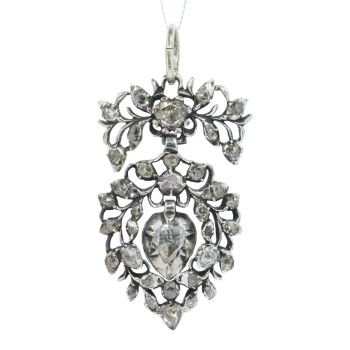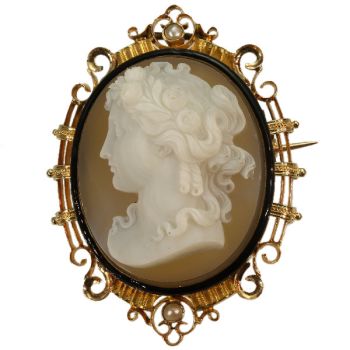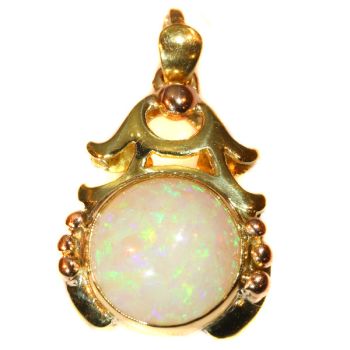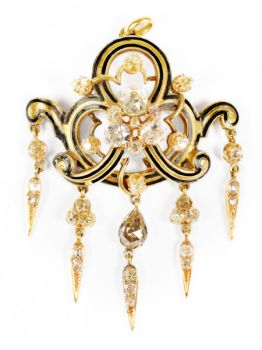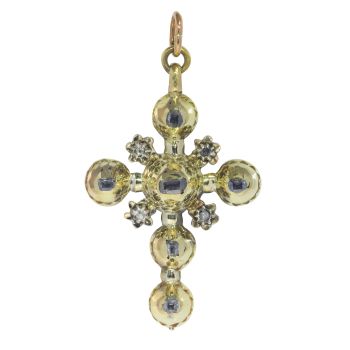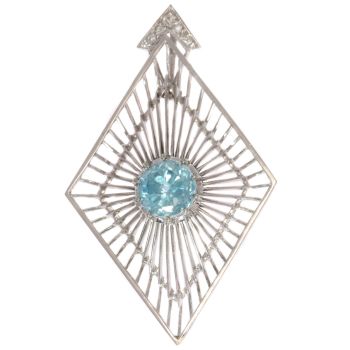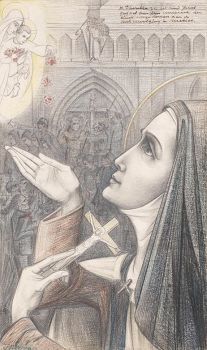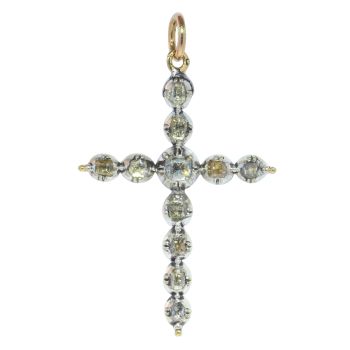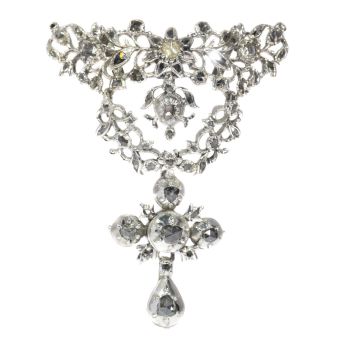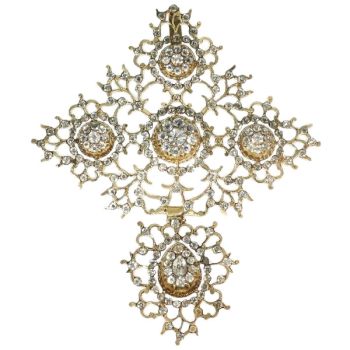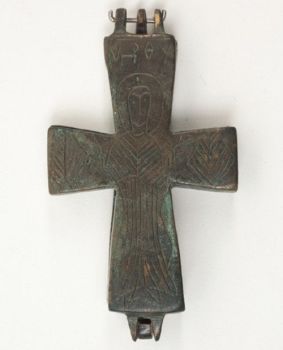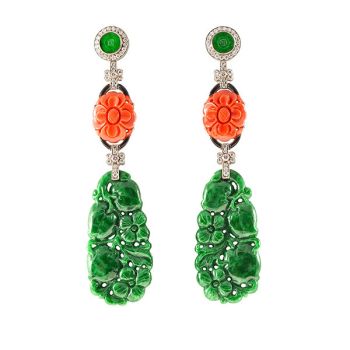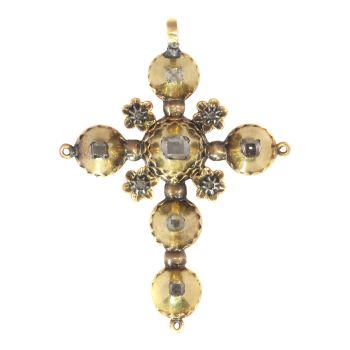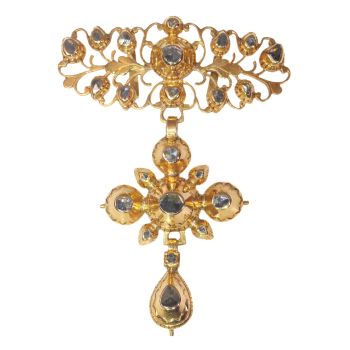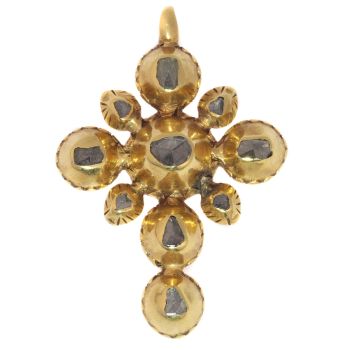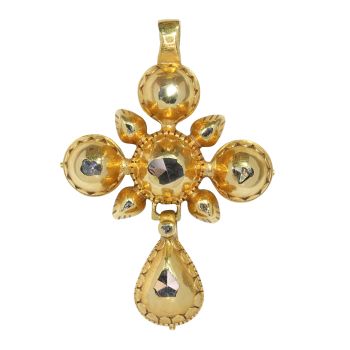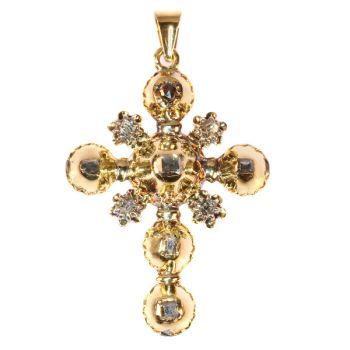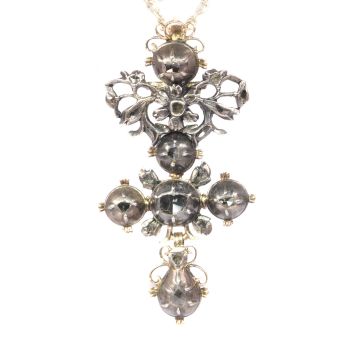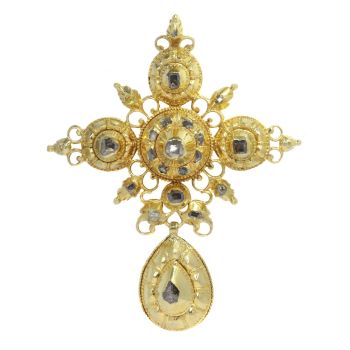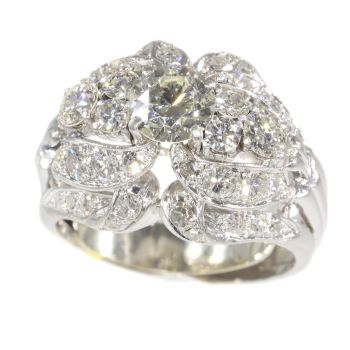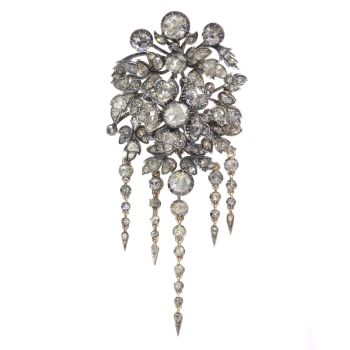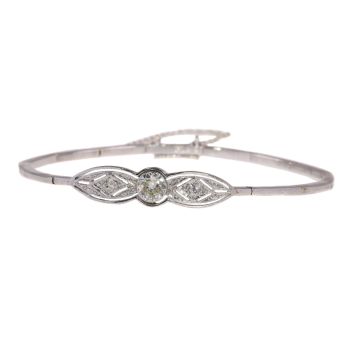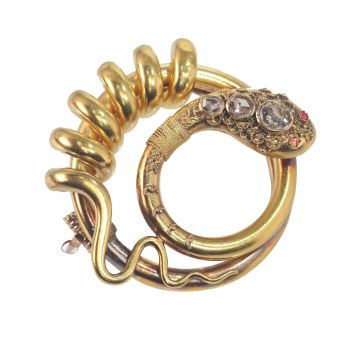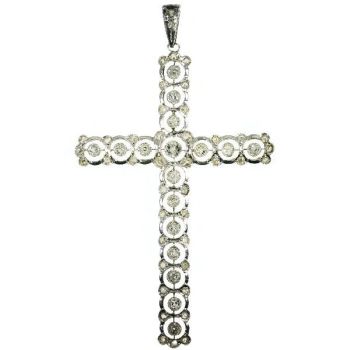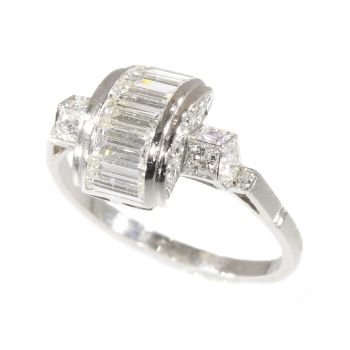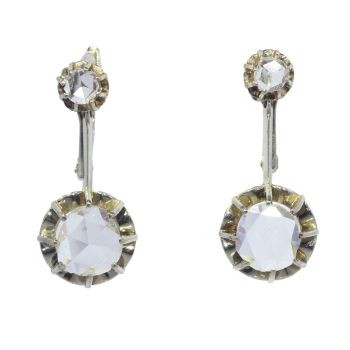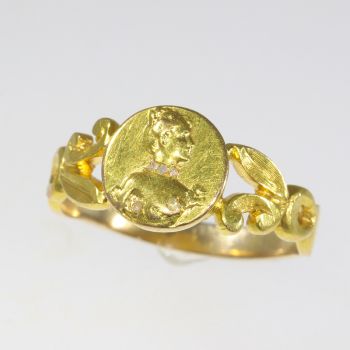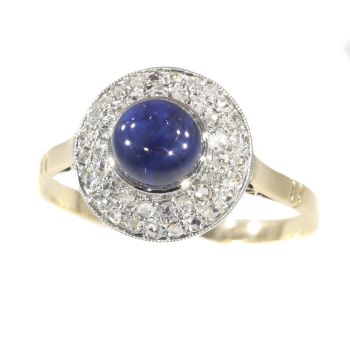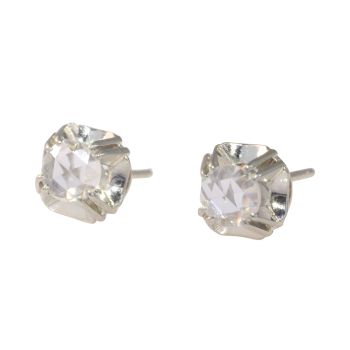Croce in platino Art Déco con diamanti e zaffiri 1930
Artista Sconosciuto
DiamanteZaffiroPietra preziosa
Attualmente non disponibile tramite Gallerease
- A proposito di opere d'arte
Antique jewelry object group: pendant
Condition: very good condition
- (more info on our condition scale)
Country of origin: unknown
Style: Art Deco - Art Deco is an eclectic artistic and design style which had its origins in Paris in the first decades of the 20th century. The style originated in the 1920s and continued to be employed until after World War II. The term "art deco" first sawwide use after an exhibition in 1966, referring to the 1925 Exposition Internationale des Arts Décoratifs et Industriels Modernes that was the culmination of high-end style modern in Paris. Led by the best designers in the decorative arts such asfashion, and interior design, Art Deco affected all areas of design throughout the 1920s and 1930s, including architecture and industrial design, as well as the visual arts such as painting, the graphic arts and film. At the time, this style was seen aselegant, glamorous, functional and modern.
- See also: Art Decoor more info on styles
Style specifics: Abstract motives and geometrical forms are quite typical for the Art Deco period. Art Deco moved away from the soft pastels and organic forms of its style predecessor, Art Nouveau, and embraced influences from many different styles and movements of the early 20th century, including Neoclassical, Constructivism, Cubism, Modernism,and Futurism. Its popularity peaked in Europe during the Roaring Twenties and continued strongly in the United States through the 1930s. Although many design movements have political or philosophical roots or intentions, Art Deco was purelydecorative.
Period: ca. 1930
- (events & facts of this era, poetry of this era, fashion of this era)
Source of inspiration: Christianity
Theme: Cross - The cross is one of the most ancient human symbols, and is used by many religions, such as Christianity. It is frequently a representation of the division of the world into four elements (or cardinal points), or alternately as the union of theconcepts of divinity, the vertical line, and the world, the horizontal line. (from: Wikipedia)
Material: platinum (touchstone tested)
- (more info on precious metals)
Diamond(s): 19 old mine brilliant cut diamonds with an estimated weight of ± 2.30ct.
Ten single brilliant cut diamonds (also called 8/8)with an estimated weight of ± 0.20ct.
Total diamond count: 29 pcs.
Total diamond weight: approx. 2.50 crt. with an average colour and clarity: F/J, si/i.
- All diamond weights, color grades and clarity are approximate since stones are not removed from their mounts to preserve the integrity of the setting.
- All diamonds we offer are screened by the IJGC - lab (www.ijgc-worldwide.com) for whether they are natural or synthetic, and all diamonds in this jewel are 100% guaranteed to be natural.
Precious stones: Eightfancy cut sapphires (lab produced) (also called verneuil sapphire). The fact that these stones are lab produced has no influence on the value of this jewel. Natural sapphires and lab produced sapphires were both used in this era, rather more for their effect than for their intrinsic value.
- It is a very common practice to treat gemstones to intensify their clarity or colour. The item in question has not been tested in this regard.
Birthstones: Diamond is the birthstone (or month stone) for April and sapphire for September.
- (more info on birthstones)
Hallmarks: No trace.
- (more info on hallmarks)
Dimensions: height 7,28 cm (2,87 inch) - See picture with a ruler in cm and inches
Weight: 8,80 gram (5,66 dwt)
Adin Reference Nº: 20357-0011
Copyright photography: Adin, fine antique jewellery
crosses, christian jewelry, religious all, platinum jewelry, jewelry with diamond, jewelry with sapphire, latest acquisitions,
antique jewelry, estate jewelry, vintage jewelry or modern jewelry
Jewelry with birthstones (or month stones) for:
January - February - March - April - May - June - July
August - September - October - November or December.
Additional information:
jewelry glossary - wall of fame - visit us in Antwerp - subscribe to our mailinglist.
What is antique jewelry? - What is estate jewelry? - What is vintage jewelry?
- A proposito di opere artista
Può succedere che un artista o un creatore sia sconosciuto.
Alcune opere non sono determinate da chi sono state realizzate o sono state realizzate da (un gruppo di) artigiani. Esempi sono statue dell'antichità, mobili, specchi o firme non chiare o leggibili ma anche alcune opere non sono affatto firmate.
Inoltre puoi trovare la seguente descrizione:
•"Attribuito a …." A loro avviso probabilmente opera dell'artista, almeno in parte
•“Studio di ….” o “Officina di” A loro avviso un'opera eseguita nello studio o nella bottega dell'artista, eventualmente sotto la sua supervisione
•“Cerchio di…” A loro avviso un'opera del periodo dell'artista che mostra la sua influenza, strettamente legata all'artista ma non necessariamente al suo allievo
•"Stile di..." o "Seguace di..." A loro avviso un'opera eseguita nello stile dell'artista ma non necessariamente da un allievo; può essere contemporaneo o quasi contemporaneo
•“Modalità di…” A loro avviso un'opera nello stile dell'artista ma di epoca successiva
•"Dopo …." A loro avviso una copia (di qualsiasi data) di un'opera dell'artista
•“Firmato…”, “Datato…” o “Iscritto” A loro avviso l'opera è stata firmata/datata/inscritta dall'artista. L'aggiunta di un punto interrogativo indica un elemento di dubbio
•"Con firma....", "Con data...", "Con iscrizione..." o “Riporta firma/data/iscrizione” a loro avviso la firma/data/iscrizione è stata aggiunta da qualcuno diverso dall'artista
Artwork details
Related artworks
Artista Sconosciuto
UN PICCOLO NETSUKE IN AVORIO DI UN OLANDESE CON UN TAMBURO1750 - 1800
Prezzo su richiestaZebregs & Röell - Fine Art - Antiques
Artista Sconosciuto
Verre à boire Cristallo façon de Venise1600 - 1650
Prezzo su richiestaPeter Korf de Gidts - Antiquairs
1 - 4 / 12René Lalique
Uno dei primi vasi "Bluets" disegnato da Rene Lalique (1860-1945)1910 - 1920
Prezzo su richiestaLennart Booij Fine Art and Rare Items
1 - 4 / 24- 1 - 4 / 24
- 1 - 4 / 24
- 1 - 4 / 24

